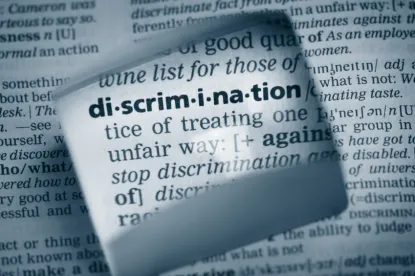The Tenth Circuit – covering Colorado, Kansas, Oklahoma, New Mexico, Utah, and Wyoming – just became the first federal appellate court to explicitly rule that employees can bring “sex-plus-age” claims against employers under Title VII of the Civil Rights Act of 1964—a claim alleging discrimination on the basis of gender against individuals over the age of 40. Relying heavily on the landmark U.S. Supreme Court decision from earlier this year in Bostock v. Clayton Cnty., Ga. protecting employees from sexual orientation-based discrimination (see our post here), the Court’s ruling sets the stage for additional federal appeals courts to follow suit.
In Frappied v. Affinity Gaming Black Hawk, LLC, female employees, each of whom was age 40 or older when they were terminated by their employer, brought “sex-plus-age” disparate impact and disparate treatment claims under Title VII, as well as separate age-based claims under the Age Discrimination in Employment Act (“ADEA”). The Title VII claims were distinctive in the sense that they alleged a combination of discriminatory motives, not all of which are covered by Title VII. Title VII protects against race, color, religion, sex and national origin discrimination, but not age.
While acknowledging that the plaintiffs’ “sex-plus-age” claims were not based on a combination of the characteristics specifically protected under Title VII, the Court recognized ample precedent holding that Title VII prohibits “sex-plus” claims in cases even where the “plus” characteristic is not protected under Title VII. (The Tenth Circuit also recognizes intersection claims that combine two traits protected by Title VII, such as sex plus race.)
Citing to Bostock, the Court first clarified that employers violate Title VII whenever the discrimination is “based in part on sex.” If sex plays any impermissible role in the employer’s decision, it is discrimination even where another corresponding contributing factor may not be protected under Title VII standing alone (such as, in this case, age). The Court then explained that Bostock also permits plaintiffs to prove their “plus” claims individually and not only as part of a group or subclass of men or women. “[I]f a female plaintiff shows that she would not have been terminated if she had been a man—in other words, if she would not have been terminated but for her sex—this showing is sufficient to establish liability under Title VII.” In other words, female plaintiffs do not need to show that all older women were discriminated against to have a cognizable claim. They must only show individual discrimination. Finally, the Court also rejected the employer’s argument that plaintiffs should not be allowed to bring sex-plus-age claims under Title VII because of the availability of relief under the ADEA.
The practical outcome of this ruling is that “sex-plus-age” (or conceivably any sex-plus) plaintiffs have a viable claim (for now, in the Tenth Circuit) even where a non-protected factor plays a role in an adverse employment action. Plaintiffs must simply show that they were subjected to unfavorable treatment compared to an employee of the opposite sex who also shares the same “plus” characteristic.
The Tenth Circuit’s ruling demonstrates the importance of Bostock beyond its obvious explicit recognition of protections for the LGBTQ community. Although this ruling is currently unique to the Tenth Circuit, as the Court noted, the Second and Sixth Circuits have acknowledged but not resolved the issue, and several federal district courts have accepted the viability of sex-plus-age claims under Title VII. The U.S. Equal Employment Opportunity Commission (EEOC) also has taken this position. The Tenth Circuit’s holding may thus pave the way for other circuit courts to similarly hold and allow sex-plus-age and other sex-plus claims under Title VII.





 />i
/>i

